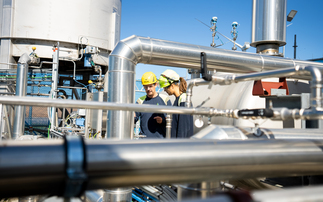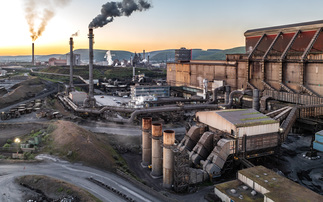Stephanie Pfeifer of the Institutional Investors Group on Climate Change argues many multi-billion dollar investors want to see an ambitious deal delivered in Paris
We are now seven months into a defining year for climate change and there are positive signs that investors, business and policy makers are acting with a much-needed sense of urgency - an urgency that has often been missing.
Within the investor community the level of engagement on climate risk and the desire to understand more about how to manage these risks is greater than ever. In response to growing demand for practical advice on managing climate risks, in April IIGCC alongside other investor groups released the climate change investment solutions guide, which outlined how investors can review risks, incorporate them into asset allocation decisions and shift to lower carbon assets.
For some investors this transition towards a lower carbon portfolio is already under way. The investor platform for climate actions, unveiled during the business and finance events in Paris last month, currently documents initiatives being undertaken across 30 countries by more than 400 investors managing $25trn. These numbers will grow in the lead-up to and beyond Paris as investors continue to integrate climate risks and opportunities into their processes and investment decision-making.
The events in Paris typified the changing mood, with a number of high profile announcements, including AXA divesting from high-risk coal and the French government making it mandatory for pension funds to disclose the carbon footprint of their portfolios, among other disclosure measures.
A couple of weeks later and reflecting this growing sense of urgency, 120 chief executives from some of the world's largest investment funds signed a letter calling on G7 countries to support a long-term emissions reduction goal in the Paris agreement. This call was heard, with Angela Merkel stating G7 support for a 40 to 70 per cent emissions cut by 2050.
While this support will provide a boost to those backing ambitious action, there is much still to be agreed.
The depth and timing of future emissions cuts is one of the key sticking points among global deal negotiators. Some countries want near-zero emissions by 2050, others by 2100 and others want no deadline at all. Uncertainty around policy is often the main drag on energy investment. If the global deal sets a long-term goal and a deadline for phasing out emissions, investor confidence that the world is united on achieving a low carbon energy system will grow and this will help to boost investment.
Even if this is achieved, it's almost certain that country plans and targets will not be enough to limit future warming to two degrees. This is why a robust and transparent review and tracking regime is crucial. The IIGCC supports five-year review periods to test action and lift ambition, as recently recommended by the IEA. This will help identify where countries are falling short and ratchet up ambition to keep the world on a two degree pathway.
The EU can play a central role in securing a strong deal, but must continue to show leadership on climate change at home. The failure of the Emissions Trading Scheme (ETS) to deliver a strong carbon price has cast a shadow over the EU's climate credentials and delays to reform have been frustrating, causing uncertainty and slowing investment.
The EU has now agreed on the earlier start of the market stability reserve (MSR), the mechanism to remove the excess number of carbon allowances and boost the carbon price, but structural reform is still needed and is currently being discussed by the Commission. In response IIGCC has set out several recommendations which could deliver a stronger investment signal. For example, the large number of allowances that have not been assigned to their intended recipients (because industrial installations closed for example) should be placed in the MSR or permanently cancelled to avoid adding to the surplus.
In the coming months investors will continue to play their part, showing leadership by managing climate risk and reducing carbon exposure and pushing for strong policies at EU and global level. Five months from Paris there are good reasons for optimism. Investors know however that while the global agreement will be an important step towards a lower carbon future, much hard work will remain to be done in the post-Paris years.
Stephanie Pfeifer is chief executive of the Institutional Investors Group on Climate Change (IIGCC)
This article is part of BusinessGreen's Road to Paris hub, hosted in association with PwC








